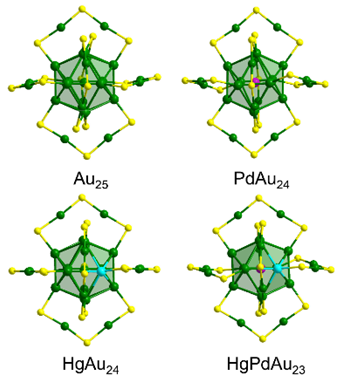| [1] |
Carrillo A. J.; Serra J. M. Catalysis 2021, 11, 741.
|
| [2] |
Senapati S.; Ahmad A.; Khan M. I.; Sastry M.; Kumar R. Small 2010, 1, 517.
doi: 10.1002/(ISSN)1613-6829
|
| [3] |
Sugano Y.; Shiraishi Y.; Tsukamoto D.; Ichikawa S.; Tanaka S.; Hirai T. Angew. Chem., Int. Ed. 2013, 52, 5295.
doi: 10.1002/anie.201301669
|
| [4] |
Chao W.; Sheng P.; Chan R.; Sun S. Small 2010, 5, 567.
doi: 10.1002/smll.v5:5
|
| [5] |
Li D. Q.; Zhang Z. Q.; Zang P. Y.; Ma Y. W.; Wu Q.; Yang L. J.; Chen Q.; Wang X. Z.; Hu Z. Acta Chim. Sinica 2016, 74, 587. (in Chinese)
doi: 10.6023/A16040196
|
|
(黎聃勤, 张志琦, 臧鹏远, 马延文, 吴强, 杨立军, 陈强, 王喜章, 胡征, 化学学报, 2016, 74, 587.)
|
| [6] |
Zhang Y. F.; Park S. J. J. Catal. 2017, 355, 1.
doi: 10.1016/j.jcat.2017.08.007
|
| [7] |
Jin Y. L.; Qin W.; Jiang Y.; Wang M.; Yao J. L.; Huang J.; Gu R. A. Acta Chim. Sinica 2008, 66, 2494. (in Chinese)
|
|
(金毅亮, 秦维, 蒋芸, 王梅, 姚建林, 黄洁, 顾仁敖, 化学学报, 2008, 66, 2494.)
|
| [8] |
Zhu C. Z.; Guo S. J.; Dong S. J. Adv. Mater. 2012, 24, 2326.
doi: 10.1002/adma.201104951
|
| [9] |
Fan X. Y.; Zhuang Q. C.; Wei G. Z.; Ke F. S.; Huang L.; Dong Q. F.; Sun S. G. Acta Chim. Sinica 2009, 67, 1547. (in Chinese)
|
|
(樊小勇, 庄全超, 魏国祯, 柯福生, 黄令, 董全峰, 孙世刚, 化学学报, 2009, 67, 1547.)
|
| [10] |
Yamazoe S.; Kurashige W.; Nobusada K.; Negishi Y.; Tsukuda T. J. Phys. Chem. C 2014, 118, 25284.
doi: 10.1021/jp5085372
|
| [11] |
Negishi Y.; Munakata K.; Ohgake W.; Nobusada K. J. Phys. Chem. Lett. 2012, 3, 2209.
doi: 10.1021/jz300892w
|
| [12] |
Cai X.; Saranya G.; Shen K. Q.; Chen M. Y.; Si R.; Ding W. P.; Zhu Y. Angew. Chem., Int. Ed. 2019, 58, 9964.
doi: 10.1002/anie.v58.29
|
| [13] |
Wang S. X.; Song Y. B.; Jin S.; Liu X.; Zhang J.; Pei Y.; Meng X. M.; Chen M.; Li P.; Zhu M. Z. J. Am. Chem. Soc. 2015, 137, 4018.
doi: 10.1021/ja511635g
|
| [14] |
Bhat S.; Baksi A.; Mudedla S. K.; Natarajan G.; Subramanian V.; Pradeep T. J. Phys. Chem. Lett. 2017, 8, 2787.
doi: 10.1021/acs.jpclett.7b01052
|
| [15] |
Walsh A. G.; Zhang P. J. Phys. Chem. Lett. 2021, 12, 257.
doi: 10.1021/acs.jpclett.0c03252
|
| [16] |
Sels A.; Salassa G.; Pollitt S.; Guglieri C.; Rupprechter G.; Barrabés N.; Bürgi T. J. Phys. Chem. C 2017, 121, 10919.
doi: 10.1021/acs.jpcc.6b12066
|
| [17] |
Nasaruddin R. R.; Hülsey M. J.; Xie J. P. Mol. Catal. 2022, 518, 112095.
|
| [18] |
Chen Q.; Qin Z. X.; Liu S.; Zhu M. C.; Li G.J. Chem. Phys. C 2021, 154, 164308.
|
| [19] |
Kang X.; Li Y. W.; Zhu M. Z.; Jin R. C. Chem. Soc. Rev. 2020, 49, 6443.
doi: 10.1039/C9CS00633H
|
| [20] |
Qin Z. X.; Zhao D.; Zhao L.; Xiao Q.; Wu T. T.; Zhang J. W.; Wan C. Q.; Li G. Nanoscale Adv. 2019, 1, 2529.
doi: 10.1039/C9NA00234K
|
| [21] |
Panapitiya G.; Wang H.; Chen Y. X.; Hussain E.; Jin R. C.; Lewis J. P. Phys. Chem. Chem. Phys. 2018, 20, 13747.
doi: 10.1039/C7CP07295C
|
| [22] |
Kwak K.; Choi W.; Tang Q.; Kim M.; Lee Y.; Jiang D. E.; Lee D. Nat. Chem. 2017, 8, 14723.
|
| [23] |
Lu Y. Z.; Zhang C. M.; Li X. K.; Frojd A. R.; Xing W.; Clayborne A. Z.; Chen W. Nano Energy 2018, 50, 316.
doi: 10.1016/j.nanoen.2018.05.052
|
| [24] |
Li S.; Alfonso D.; Nagarajan A. V.; House S. D.; Yang J. C.; Kauffman D. R.; Mpourmpakis G.; Jin R. C. ACS Catal. 2020, 10, 12011.
doi: 10.1021/acscatal.0c02266
|
| [25] |
Yang S.; Wang S. X.; Jin S.; Chen S.; Sheng H. T.; Zhu M. Z. Nanoscale 2015, 7, 10005.
doi: 10.1039/C5NR01965F
|
| [26] |
Suyama M.; Takano S.; Tsukuda T. J. Phys. Chem. C 2020, 124, 23923.
doi: 10.1021/acs.jpcc.0c06765
|
| [27] |
Bootharaju M. S.; Sinatraa L.; Bakr O. M. Nanoscale 2016, 8, 17333.
doi: 10.1039/C6NR06353E
|
| [28] |
Fei W. W.; Antonello S.; Dainese T.; Dolmella A.; Lahtinen M.; Rissanen K.; Venzo A.; Maran F. J. Am. Chem. Soc. 2019, 141, 16033.
doi: 10.1021/jacs.9b08228
|
| [29] |
Zhu M. Z.; Lanni E.; Garg N.; Bier M. E.; Jin R. C. J. Am. Chem. Soc. 2008, 130, 1138.
doi: 10.1021/ja0782448
|
| [30] |
Takano S.; Ito S.; Tsukuda T. J. Am. Chem. Soc. 2019, 141, 15994.
doi: 10.1021/jacs.9b08055
|
